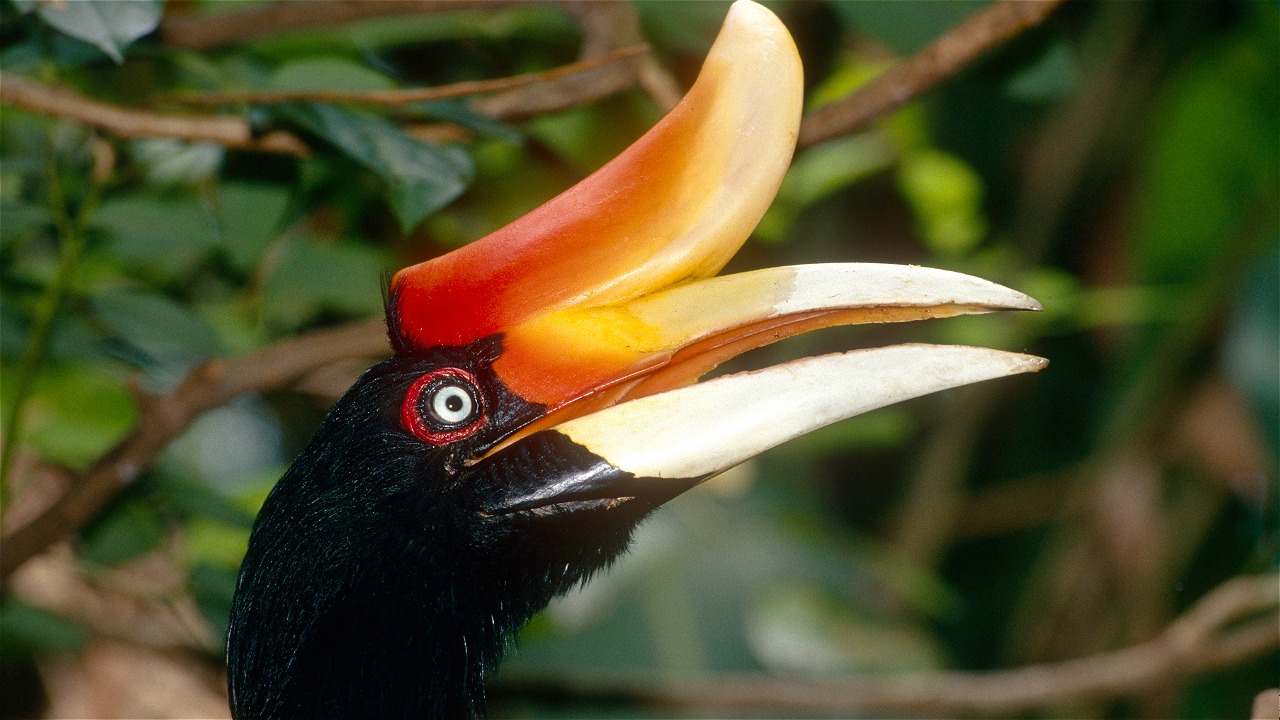BORNEO HORNBILL
Did you know that the female hornbill builds a nest in the hollow of a large tree trunk and sealing the opening with a plaster made up mainly of feces?
As fruit-eaters, hornbills play a key role in dispersing the seeds of tropical trees, thereby keeping forests healthy and diverse. Hornbills are of considerable cultural importance and the abstract forms of their beaks can be found on many Dayak motifs. The two largest hornbills, the rhinoceros hornbill, and the helmeted hornbill, are declining as they have been affected by the removal of their large nesting trees. They are also hunted for their meat, their casque, and for their tail feathers, used for traditional costumes and dancing.
Hunting is causing populations to decline or become locally extinct, a problem that is made worse by the birds’ slow breeding rate and low natural densities. Five of the 8 hornbill species are now listed as "Near Threatened" on the IUCN's Red List of Threatened Species. In 2016, helmeted hornbill increases their status from ‘vulnarbale’ into ‘critically endangered’ drove by massive poaching





